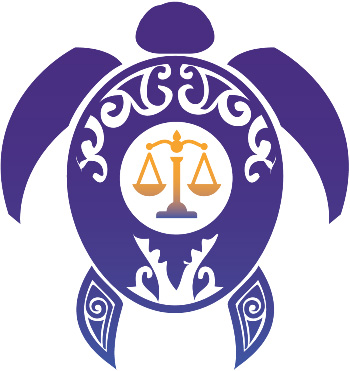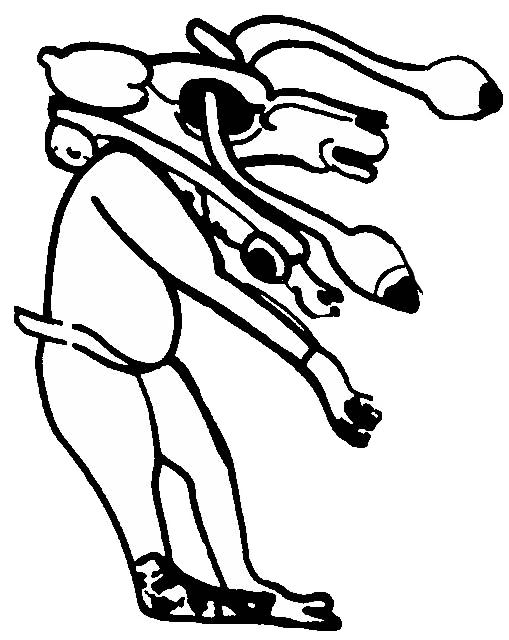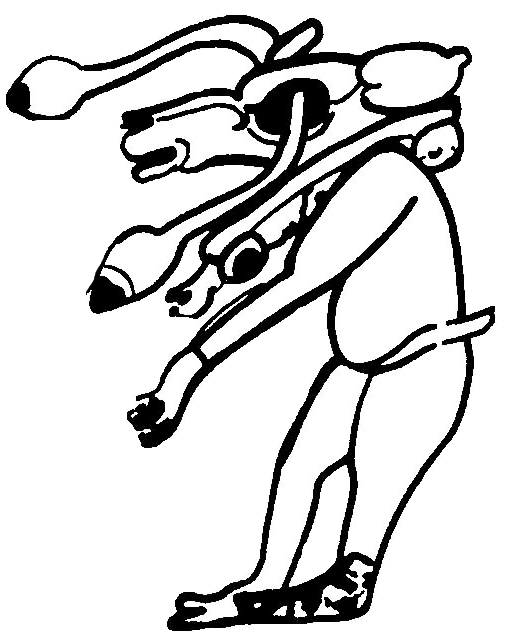Indian Law, Indigenous Law


The Kawaskimhon [Kawaskimhon Moot] “Talking Circle Moot” logo was
designed by Queen’s Arts and Science staff member Sarah Chapman / Indigenous
Bar.
先住民法
Indian Law, Indigenous Law


The Kawaskimhon [Kawaskimhon Moot] “Talking Circle Moot” logo was
designed by Queen’s Arts and Science staff member Sarah Chapman / Indigenous
Bar.
先住民法(Indian Law, Indigenous Law, Aboriginal Law)とは、国家制度の枠組みのなかで先住民のさまざまな権利の法的保護と自己決定権の承認を国家制度と矛盾することなく調和するための法律、ないしは 法律群のことである。一般に、先住民法というと、先住民コミュニティにおいて独自の権限をもつ先住民慣習法ないしはその法体系のことを意味するので、カナダ政府のように(先住民全体の権利体系をまとめた)、カナダ・アボリジナル法(Canadian Aboriginal law)という、国家内の先住民権を有する人たちの法的権利と権限を規定するための法律がある。
先住民法あるいはアボリジナル法というのは、国家の中に複数の法的価値観の共存を前提とするので、そのような法体系が準備されている国家は多元的法体系のもとにあると言ってもよい(千葉 1999)。
先住民法関連語彙集
| Trust
relationship(信託関係) |
|
| warden. |
One who guards, protects, or
defends; occasionally a guardian angel、後見者 |
| Guardian(守護者、保護者) |
|
| self-determination |
|
| self-government |
|
| ward | 後見を受けている未成年者、被後見人 |
人脈や法制度
| Charles
Wilkinson, |
Charles
Wilkinson is the Moses Lasky Professor of Law Emeritus at the
University of Colorado. He has also been named as Distinguished
Professor, one of just twenty-five on the University of
Colorado-Boulder campus. After graduating from Stanford Law School and
practicing with Phoenix and San Francisco firms, Wilkinson joined the
Native American Rights Fund in 1971 as a staff attorney. Since 1975, he
has taught at the Oregon and Colorado law schools, receiving many
teaching and research awards.
His fourteen books include the standard law casebooks on Indian Law and
Federal Public Land Law. He has also authored general audience books
such as Crossing the Next Meridian: Land, Water, and the Future of the
West (1992); The Eagle Bird: Mapping a New West (1992); Fire on the
Plateau: Conquest and Endurance in the American Southwest (1999);
Messages from Frank?s Landing: a Story of Salmon, Treaties, and the
Indian way (2000); Blood Struggle: The Rise of Modern Indian Nations
(2005); and The People Are Dancing Again: The History of the Siletz
Tribe of Western Oregon (2010).
Over the years, Wilkinson has taken on many special assignments for the
US Departments of Interior, Agriculture, and Justice. He served as
special counsel to the Interior Department for the drafting of the
Presidential Proclamation, signed by President Clinton in September
1996, establishing the Grand Staircase-Escalante National Monument in
Utah. He acted as the facilitator in negotiations between the National
Park Service and the Timbisha Shoshone Tribe concerning a tribal land
base in Death Valley National Park; in 2000, Congress enacted
legislation ratifying the resulting agreement. In 2004, he served as
the mediator in successful negotiations, involving salmon runs in the
Cedar River, between the City of Seattle and the Muckleshoot Indian
Tribe. He served as Special Advisor to the Bears Ears Inter-Tribal
Coalition in regard to the creation of the Bears Ears National
Monument, proclaimed by President Obama in 2016.
Wilkinson's awards include the National Wildlife Federation's National
Conservation Award; the Oregon High Desert Museum's Earle A. Chiles
Award for career dedication to the High Desert; the Warm Springs
Museum's Twanat Award for tireless work for Indian people; the Grand
Canyon Trust's John Wesley Powell Award for extraordinary vision,
passion, and commitment to the Colorado Plateau; and the Federal Bar
Association's Lawrence R. Baca Award for Lifetime Achievement in Indian
Law. |
コ
ロラド大学モーゼス・ラスキー法学部名誉教授。コロラド大学ボルダー校で25人しかいない特別教授にも任命されている。スタンフォード大学ロースクールを
卒業後、フェニックスとサンフランシスコの法律事務所で弁護士として働き、1971年にNative American Rights
Fundにスタッフ弁護士として参加した。1975年以来、オレゴン州とコロラド州のロースクールで教鞭をとり、多くの教育賞や研究賞を受賞している。彼
の14冊の著書には、「インディアン法」および「連邦公有地法」の標準的な法律ケースブックが含まれる。また、「Crossing the Next
Meridian」などの一般向けの本も執筆している。Crossing Next Meridian: Land, Water, and the
Future of the West (1992)、The Eagle Bird: Mapping a New West
(1992)、Fire on the Plateau:
アメリカ南西部の征服と忍耐(1999年)、フランク・ランディングからのメッセージ:サーモン、条約、インディアンの道の物語(2000年)、血の闘い
(2000年)、現代インディアン・ネーションの台頭(2000年)。The Rise of Modern Indian Nations
(2005)、The People Are Dancing Again: The History of the Siletz Tribe of
Western Oregon
(2010)がある。長年にわたり、米国内務省、農務省、司法省のために多くの特別任務をこなしてきた。1996年9月にクリントン大統領が署名した、ユ
タ州にグランド・ステアケース・エスカランテ国定公園を設立する大統領布告では、内務省の特別顧問として起草に携わった。また、デス・バレー国立公園の部
族用地に関する国立公園局とティンビシャ・ショショーネ族との交渉では、進行役を務め、2000年に議会でこの合意を批准する法律が制定された。2004
年には、シアトル市とマックレスフート・インディアン部族の間で、シーダー川のサケの遡上に関する交渉が行われ、調停役を務めた。2016年にオバマ大統
領が宣言したベアーズ・イヤーズ国定公園の創設に関して、ベアーズ・イヤーズ部族間連合の特別アドバイザーを務めた。ウィルキンソンの受賞歴には、全米野
生生物連合の全国自然保護賞、オレゴン州ハイデザート博物館のアール・A・チャイルズ賞(ハイデザートへのキャリア的献身)、ウォームスプリングス博物館
のトゥアナート賞(インディアンの人々のためのたゆみない活動)、グランドキャニオントラストのジョン・ウェズリー・パウエル賞(コロラド高原への並外れ
たビジョン、情熱、献身)、連邦法曹協会のローレンス・R・バカ賞(インディアン法における生涯功績賞)などがある。 |
| Ada Deer (born 1935) |
Ada
Deer (born 1935) is a member of the Menominee Indian Tribe of Wisconsin
and a Native American advocate, scholar and civil servant. As an
activist she opposed the federal termination of tribes from the 1950s
following the bills led by Arthur Vivian Watkins, a Republican
senator.[1] During the Clinton Administration, Deer served as Assistant
Secretary of the Interior for Indian Affairs. Following the completion of her graduate work, Deer returned to the Midwest to be closer to the Menominee Nation, settling in Minneapolis. She found few local services in place for Native Americans living in urban settings. Due to her background in social services, Ada worked to advocate on their behalf with federal authorities. She also led a newer generation of Native American leaders which helped gain acceptance of self-determination in things that they do but also works to implement it consistently. Ada Deer led the Menominee's in their drive to restore the ties that their tribe had with the federal government in 1991. In 1991, she became the head of the Native American Right's Fund which gave her the ability to restore the ties with the federal government. This large accomplishment led to immense leadership opportunities. In the book, American Indians by Hagan, Ada Deer is described as a part of the "increasing number of women" that are making a difference in the Native American environment. Since the "Termination Era" of the 1950s and 1960s (resulting in reduced federal oversight of Native American affairs), the Menominee tribe had been governed by a corporate body called Menominee Enterprise, Inc. Menominee Enterprises, Inc. was controlled by a voting trust and Menominee tribal members had no shares in the corporation. Four of the voting trust members were Menominee; however, five votes were required in order for the trust to take action. In the 1960s and 1970s, there was renewed Congressional involvement in rebuilding tribal infrastructure, both socially and economically. During that time, Deer became involved in a group called DRUMS (Determination of Right and Unity for Menominee Shareholders) in opposition to Menominee Enterprise's proposed sale of former Menominee lands. At first, Deer encountered difficulty with Wayne Aspinall, the chairman of the Interior Committee in Congress, who had supported terminating the Menominee's status as a federally recognized tribe.[clarification needed]. She took frequent trips to Washington but was denied the chance to speak with Aspinall. After he was defeated for his seat, Deer raised publicity as well as support for the Menominee cause. Her efforts, along with many other Menominee's, played a part in bringing the Termination Era to a close. On December 22, 1973, President Richard Nixon signed the Menominee Restoration Act.[3] This legislation restored official federal recognition to the Menominee tribe. Because of her active participation in changing the legislation, Ada Deer was the first woman to chair the Menominee tribe in Wisconsin. From 1974 to 1976, Deer served as chair of the Menominee Restoration Committee. Before and after her term in the Bureau of Indian Affairs (BIA), Deer served on the National Support Committee (NSC) of the Native American Rights Fund (NARF). She has served as chair of the NSC and chair of the NARF board of directors |
エ
イダ・ディア(1935年生まれ)は、ウィスコンシン州のメノミニー・インディアン部族の一員であり、ネイティブアメリカンの擁護者、学者、公務員であ
る。活動家として、共和党上院議員アーサー・ビビアン・ワトキンスが主導した法案に従って、1950年代から部族の連邦制廃止に反対した[1]。
クリントン政権時代、ディアはインディアン問題担当内務省次官補として勤務した。 大学院修了後、メノミニー民族に近い中西部に戻り、ミネアポリスに居を構えた。しかし、都会に住むネイティブ・アメリカンのためのサービスは、地元ではほ とんど行われていませんでした。エイダは、社会福祉に携わっていたこともあり、彼らのために連邦当局に働きかけました。また、ネイティブ・アメリカンの新 しい世代のリーダーを指導し、彼らが行うことに自己決定を受け入れ、それを一貫して実行するよう働きかけました。エイダ・ディアは、1991年にメノミ ニー族と連邦政府との関係を回復させるための活動を主導しました。1991年、彼女はNative American Right's Fundの代表となり、連邦政府との結びつきを回復させる力を得ました。この大きな功績は、リーダーとしての絶大なチャンスにつながった。ヘーガン著『ア メリカン・インディアン』の中で、エイダ・ディアは、ネイティブ・アメリカンを取り巻く環境に変化をもたらしている「増え続ける女性たち」の一人として描 かれている。 1950年代から1960年代にかけての「終結の時代」(その結果、ネイティブ・アメリカン問題に対する連邦政府の監視が弱まった)以降、メノミニー族は メノミニー・エンタープライズ社という法人によって統治されていた。Menominee Enterprises, Inc.は議決権を持つ信託によって管理され、メノミニー部族のメンバーはこの会社の株式を持っていませんでした。信託のメンバーのうち4人がメノミニー でしたが、信託が行動を起こすには5人の投票が必要でした。1960年代から1970年代にかけて、部族のインフラを社会的、経済的に再建するために、米 国議会の関与が見直された。 その頃、ディアーは、メノミニー・エンタープライズ社が提案した旧メノミニー土地の売却に反対するDRUMS(Determination of Right and Unity for Menominee Shareholders)というグループに参加するようになりました。当初、ディアーは、メノミニーの連邦公認部族としての地位の抹消を支持していた ウェイン・アスピナル内務委員長に難色を示しました[clarification needed]。彼女は頻繁にワシントンに足を運んだが、アスピナルと話す機会はなかった。アスピノールが議席を失った後、ディアはメノミニーへの支持と 同時に世論喚起を行いました。 彼女の努力は、他の多くのメノミニー達と共に、ターミネーション時代の終結に一役買った。1973年12月22日、リチャード・ニクソン大統領は「メノミ ニー復興法」[3]に署名し、メノミニー部族は連邦政府から正式に承認されるようになりました。この法律改正に積極的に参加したエイダ・ディアは、ウィス コンシン州のメノミニー族で初の女性議長になりました。1974年から1976年まで、ディアはメノミニー復興委員会の委員長を務めました。インディアン 局(BIA)での任期前後、ディアはネイティブ・アメリカン権利基金(NARF)の全国支援委員会(NSC)の委員を務めました。NSCの議長、NARF の理事長を歴任。 |
| Kawaskimhon National Aboriginal
Moot |
The Kawaskimhon National Aboriginal Moot
is unique among moot court competitions in the world, in that it is
conducted in accordance with Aboriginal customs of peaceful negotiation
and consensus-building rather than adversarial competition. Established
in 1995, the moot attracts teams from law schools across Canada. Each
team represents a different party in a complex negotiation concerning
Aboriginal law and works toward consensus with the help of Aboriginal
facilitators and an elder. The format of Kawaskimhon, which is a Cree
word meaning “to speak with knowledge,” encourages students to bring
their unique personal perspectives to bear on a collective problem
affecting Aboriginal peoples and to work toward a mutual consensus.
The Native Law Students Association of the University of Toronto held
the first Kawaskimhon Moot in 1994. Since then, the moot has grown
rapidly, attracting participation from more and more law schools each
year. Presently, around 15 law schools from Canada participate each
year.
There are no competitive awards, but the moot is invaluable in giving
Aboriginal students and students interested in Aboriginal law an
opportunity to forge bonds with each other and deepen their
understanding of Aboriginal legal issues.
The moot takes place over two days. It is hosted by a different law
school each year. Teams may represent a variety of parties including
(depending on the nature of the problem) specific First Nations, Band
Councils, “traditional” chiefs’ organizations, the Assembly of First
Nations, federal government agencies, provincial government agencies,
labour unions, human rights groups, and non-Aboriginal business or
community groups. |
カ
ワスキムホン全国アボリジナル・ムートは、敵対的な競争ではなく、平和的な交渉と合意形成というアボリジニの慣習に従って行われる点で、世界のムートコー
ト競技の中でもユニークなものである。1995年に創設されたこの大会には、カナダ各地のロースクールからチームが参加している。各チームは、アボリジニ
の法律に関する複雑な交渉において異なる当事者を代表し、アボリジニのファシリテーターや長老の助けを借りながら合意形成に努める。カワスキムホンとは、
「知識を持って話す」という意味のクリー族の言葉で、アボリジニに影響を与える集団的な問題に対して、学生たちが独自の個人的な視点を持ち、相互の合意形
成に向けて努力することを促す形式になっている。トロント大学先住民法学生協会が1994年に第1回カワスキムホン・ムートを開催した。以来、このムート
は急速に発展し、毎年多くのロースクールから参加者を集めている。現在では、カナダから約15校のロースクールが毎年参加している。競争的な賞はありませ
んが、アボリジニの学生やアボリジニの法律に関心のある学生が、互いの絆を深め、アボリジニの法律問題への理解を深める貴重な機会となっている。ムートは
2日間にわたって開催されます。毎年異なるロースクールが主催している。チームは、問題の性質に応じて、特定の先住民、バンド評議会、「伝統的」首長組
織、先住民議会、連邦政府機関、州政府機関、労働組合、人権団体、非アボリジニのビジネスやコミュニティグループなど、さまざまな関係者を代表することが
できる。 |
| Canadian Aboriginal law |
Canadian Aboriginal law
is the body of law of Canada that concerns a variety of issues related
to Indigenous peoples in Canada.[1] Canadian Aboriginal Law is
different from Canadian Indigenous law: In Canada, Indigenous Law
refers to the legal traditions, customs, and practices of Indigenous
peoples and groups.[2][3] Aboriginal peoples as a collective noun[4] is
a specific term of art used in legal documents, including the
Constitution Act, 1982, and includes First Nations, Inuit and Métis
people.[5][6] Canadian Aboriginal law provides certain constitutionally
recognized rights to land and traditional practices. Canadian
Aboriginal Law enforces and interprets certain treaties between the
Crown and Indigenous people, and manages much of their interaction.[7]
A major area of Aboriginal law involves the duty to consult and
accommodate. |
カナダ・
アボリジナル法は、カナダの先住民族に関連する様々な問題に関わるカナダの法律の本体である。カナダのアボリジナル法は、カナダの先住民法とは異なる。カ
ナダでは、先住民法は、先住民族やグループの法的伝統、慣習、および慣行を指す。集合名詞としての先住民は、1982年憲法法を含む法律文書で使用される
特定の用語であり、ファーストネーション、イヌイットとメティスの人々が含まれている。カナダ・アボリジナルは、土地や伝統的な慣習に対して、憲法で認め
られた一定の権利を規定している。カナダ・アボリジナル法は、クラウン(=英連邦国家)と先住民の間で特定の条約を施行し、解釈し、彼らの相互作用の多く
を管理する。アボリジナル法の主要な領域では、協議し、収容する義務が含まれる。 |
links
リンク
文献
その他の情報
Do not paste, but [re]think this message for all undergraduate students!!!

